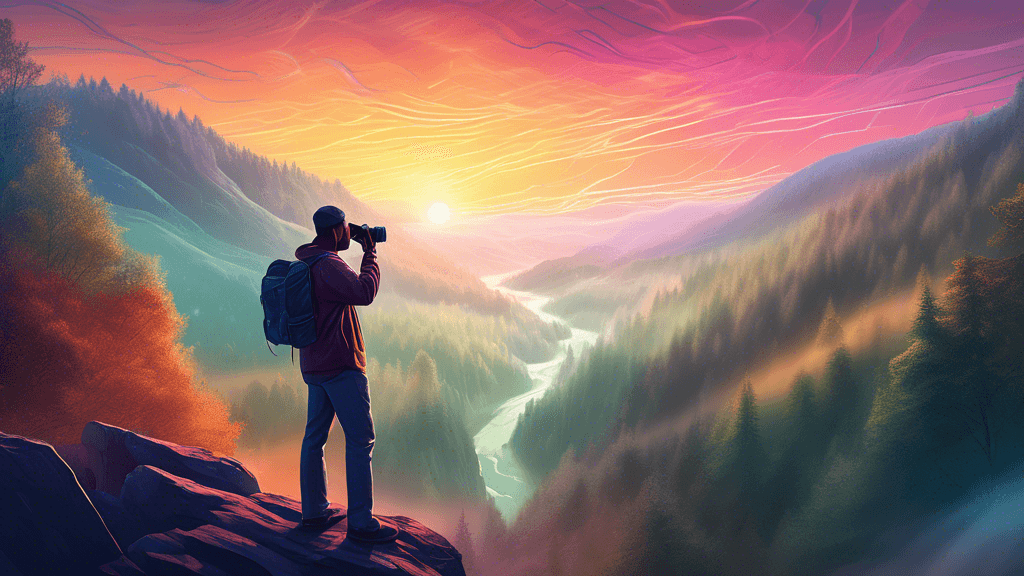
Crafting Epic Landscapes: A Guide to Narrative Photography
Share
Understanding the Art of Narrative Landscape Photography
Narrative landscape photography transcends traditional boundaries to tell stories, evoke emotions, and engage audiences on a deeper level. But what exactly makes landscape photography narrative? And how can photographers, both amateur and professional, harness the power of a story through their lenses?
This blog explores the intricate world of narrative landscape photography, designed for photographers who wish to expand their craft and audiences eager to delve into the deeper meanings behind stunning scenic images.
What is Narrative Landscape Photography?
Narrative landscape photography involves capturing landscapes in such a way that they convey a story or evoke a specific emotional response. Unlike conventional landscape photography that focuses on aesthetic and natural beauty, narrative landscape photography aims to represent more than just the visual elements. It's about the interplay between place, emotion, and story.
Why Does Narrative Matter in Landscape Photography?
In the words of famous photographer Ansel Adams, A photograph is usually looked at - seldom looked into. Narrative landscape photography invites viewers to 'look into' and discover the layers of meaning beyond the surface. This approach adds depth to the photograph and can:
- Communicate broader environmental or social messages
- Symbolize personal or collective stories
- Elicit stronger emotional connections with the audience
Techniques for Crafting Epic Narrative Landscapes
Creating narrative-driven landscapes is an art that requires thoughtfulness and skill. Here are some techniques to help photographers tell more compelling stories through their images:
1. Choose Locations with a Story
Every place has a history and choosing a location that holds meaning or significance can automatically impart a narrative to your image. Whether it's the ruins of an ancient castle, a bustling street market, or a serene lake at dawn, each setting offers unique stories waiting to be told.
2. Consider the Composition Carefully
Composition in narrative landscape photography goes beyond the rule of thirds and leading lines. It involves arranging elements within the frame in a way that guides the viewer's eye towards understanding the story or the mood. Think about how the elements relate to each other and what they signify.
3. Utilize Natural Light to Convey Mood
Lighting can dramatically alter the mood of a photograph, thereby affecting the narrative. For instance, golden hour light can suggest an ending or a beginning, while overcast conditions could reinforce themes of gloom and uncertainty.
4. Incorporate Human Elements Sparingly
While primarily focused on landscapes, incorporating human elements can anchor the viewer and provide scale and perspective. A lone figure staring out over a canyon can represent introspection or isolation, adding a powerful emotional layer to the photograph.
5. Contextualize Through Titles and Descriptions
Words can be a powerful tool in narrative photography. A thoughtful title or a brief description can provide context that enhances the story told through the visual elements. This textual layer can guide interpretations and deepen the viewer's connection to the image.
Case Studies: Masters of Narrative Landscape Photography
Many renowned photographers have effectively harnessed the narrative potential of landscapes. For instance, Edward Burtynsky’s work in documenting transformation in landscapes due to industrial work and human intervention tells a silent yet powerful story of change and impact. Another example is Michael Kenna, who often uses black and white imagery to create ethereal scenes that pull viewers into a quiet, contemplative narrative.
Conclusion: Your Journey into Narrative Landscape Photography
Mastering the art of narrative in landscape photography requires practice, patience, and passion. By considering the story behind each shot, understanding the elements of composition, and using light and color to convey emotion, photographers can elevate their work from capturing to captivating.
As you embark on your journeys with a camera in hand, remember that every landscape is not just a space, but a canvas for telling stories. What story will you tell?
Ready to Begin Your Narrative Journey?
Now that you are equipped with the knowledge and insights on crafting narrative landscapes, it's time to go out there and experiment. Explore new locations, experiment with different lights and shadows, and most importantly, let your passion lead the way. How will you use your camera to tell stories that matter?





